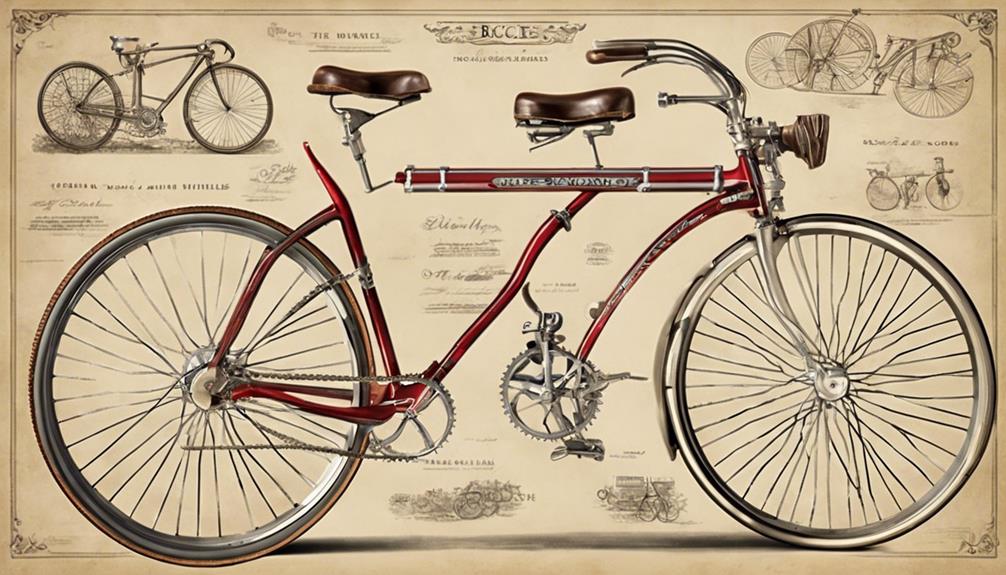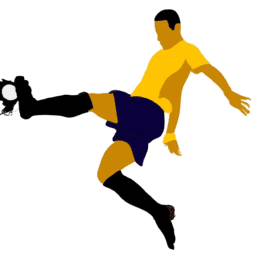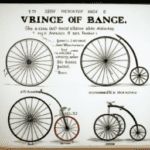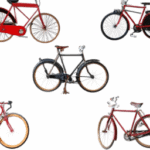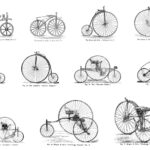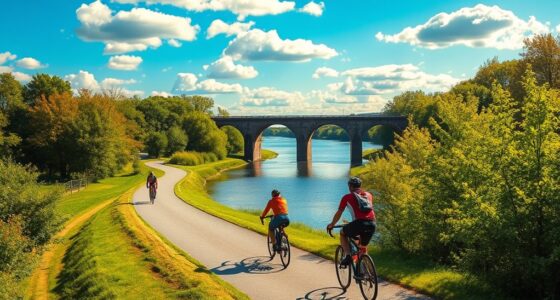Embarking on this journey through the annals of bicycle history is akin to unlocking a treasure trove of untold tales and revolutionary advancements that have reshaped our world in unexpected ways.
As we navigate through the labyrinth of time, tracing the intricate paths that bicycles have traversed, we are met with a tapestry of narratives waiting to be unraveled.
Join us on this exploration as we uncover the hidden intricacies and remarkable stories that have propelled the humble bicycle into the realm of cultural icon and societal transformer, forever altering the landscapes they pedal through.
Key Takeaways
- Velocipede's evolution from Karl von Drais to modern mountain bikes showcases continuous innovation.
- Bicycles influenced women's liberation, urban planning, wartime efficiency, and sustainable living.
- Milestones like the safety bicycle and cycling infrastructure shaped bicycles' societal impact.
- Bicycle's journey from early designs to sleek modern forms reflects a rich history of progress.
Origins of the Bicycle
The invention of the first human-powered land vehicle, the velocipede, in 1817 by Karl von Drais revolutionized personal transportation with its innovative design and functionality. This precursor to the modern bicycle featured a simple yet effective design, comprising two miniature carriage wheels and a frame that allowed riders to propel themselves forward by pushing off the ground. The velocipede's front wheel served as the steering mechanism, providing riders with control over their direction of travel.
As the velocipede evolved over time, incorporating advancements such as the addition of pedals and chain mechanisms, it eventually paved the way for the development of various bicycle models, including the mountain bike. The mountain bike, characterized by its sturdy frame and knobby tires, was specifically designed for off-road cycling adventures, catering to individuals seeking freedom and exploration in rugged terrains.
Despite these advancements, the fundamental concept of utilizing the front wheel for steering remained consistent throughout the evolution of bicycle designs, highlighting the enduring impact of Karl von Drais's original invention.
Evolution of Bicycle Designs

With a focus on the evolution of bicycle designs, significant innovations have continually shaped the landscape of cycling technology and functionality. From the rudimentary running machine in 1817 to the modern bicycle designs we see today, the progression of two-wheeled transportation has been remarkable.
- Wooden Frame and Two Wheels (1817): The running machine set the foundation for future bicycle designs with its simplistic yet groundbreaking concept.
- Pedal-Powered Bicycles (1861): Pierre Michaux's addition of pedals to the front wheel marked the transition to modern pedal-powered bicycles, revolutionizing the way we ride.
- Penny Farthing (Mid-1800s): The iconic penny farthing, with its large front wheel and small rear wheel, showcased early innovations in bicycle design and captured the imagination of riders.
- Safety Bicycle (1880s): The introduction of the safety bicycle with its chain drive and equal-sized wheels brought about improved stability and safety, shaping the future of cycling comfort and accessibility.
Throughout history, these innovations have paved the way for the sleek, efficient, and versatile modern bicycles we enjoy today.
Impact of Bicycles on Society

Pivoting from the evolution of bicycle designs, the societal impact of bicycles has been multifaceted and profound throughout history. Bicycles played a pivotal role in women's emancipation, symbolizing newfound independence and mobility in the late 19th century. They reshaped urban landscapes, prompting cities to develop cycling infrastructure to accommodate the growing popularity of cycling. During World War I, bicycles demonstrated their efficiency in navigating trenches, highlighting their practicality in wartime scenarios.
However, the post-World War II era witnessed a shift in transportation preferences towards automobiles, posing challenges to the bicycle industry. Despite this, bicycles have persisted as a symbol of sustainable transportation and healthy living. They continue to promote environmental benefits by reducing carbon emissions and fostering physical activity. As a mode of transportation, bicycles offer individuals the freedom to move efficiently while contributing to a greener and healthier society.
Notable Milestones in Bicycle History

In the annals of bicycle history, significant milestones have marked pivotal advancements in the evolution of this beloved mode of transportation.
- The first human-powered land vehicle, the velocipede, was invented in 1817 by the German baron Karl von Drais, featuring two miniature carriage wheels.
- Frenchman Pierre Michaux revolutionized bicycles in 1861 by adding pedals to the front wheel, giving birth to the modern pedal-powered bicycle.
- The mid-1800s saw the emergence of the iconic penny farthing, with a large front wheel, showcasing early variations of bicycle designs.
- Safety concerns in the 1880s led to the development of the safety bicycle, with a chain drive and equal-sized wheels for improved stability.
These milestones, driven by innovative bicycle mechanics and the passion for enhancing transportation, have shaped the bicycles we know today.
From the humble beginnings of the velocipede to the safety innovations of the late 19th century, each development has played a crucial role in the rich tapestry of bicycle history, fueling its growth as a popular recreational activity and mode of transportation.
Cultural Significance of Bicycles

Bicycles have long served as more than just a mode of transportation, embodying deep cultural significance through their historical impact and societal symbolism. In the late 19th century, bicycles symbolized women's emancipation and newfound mobility, breaking traditional norms and empowering women to explore the world independently.
As cities adapted to accommodate the growing popularity of bicycles, urban landscapes transformed, emphasizing the importance of sustainable and efficient transportation methods. During World War I, bicycles played a crucial role in enhancing efficiency during trench maneuvers, showcasing their utility beyond civilian life.
Cycling not only became a popular recreational activity but also a symbol of societal transformation, representing freedom, progress, and individualism. However, the rise of automobiles post-World War II posed challenges for the bicycle industry, leading to shifts in transportation preferences and urban planning.
Despite these challenges, bicycles remain ingrained in our cultural fabric, symbolizing a sustainable and healthy lifestyle choice while continuing to inspire societal change and progress.
Frequently Asked Questions
What Is the Origin of the Bicycle History?
The origin of bicycle history traces back to 1817 with Karl von Drais' invention of the Velocipede, the first human-powered land vehicle. Riders propelled it by foot, reaching speeds of 5-6 mph, revolutionizing mobility in the 19th century.
What Is the History of the Old Bicycle?
We unveil the fascinating history of the old bicycle, tracing back to 1817 with Karl von Drais' invention of the Velocipede. This human-powered vehicle revolutionized transportation, offering riders speeds of up to six miles per hour.
Why Did Karl Von Drais Invent the Bicycle?
We invented the bicycle to revolutionize transportation. Karl von Drais created it in 1817 for efficient, less labor-intensive travel. His design, with two miniature wheels and foot propulsion, enabled faster speeds and covered more ground with less effort than walking.
How Did the Bicycle Affect American History?
Bicycles revolutionized American history, empowering individuals with newfound freedom and shaping social movements. They provided mobility for all, challenged norms, and fueled economic growth. Weaving through the fabric of society, bicycles paved the way for progress.
Conclusion
In conclusion, the history of the bicycle is a winding road filled with innovation, resilience, and societal impact.
As we pedal through the past, we uncover the spokes of progress, the chains of change, and the wheels of revolution that have shaped our world.
Like a well-oiled machine, the bicycle continues to roll forward, carrying with it the stories of generations past and the promise of a brighter future.
